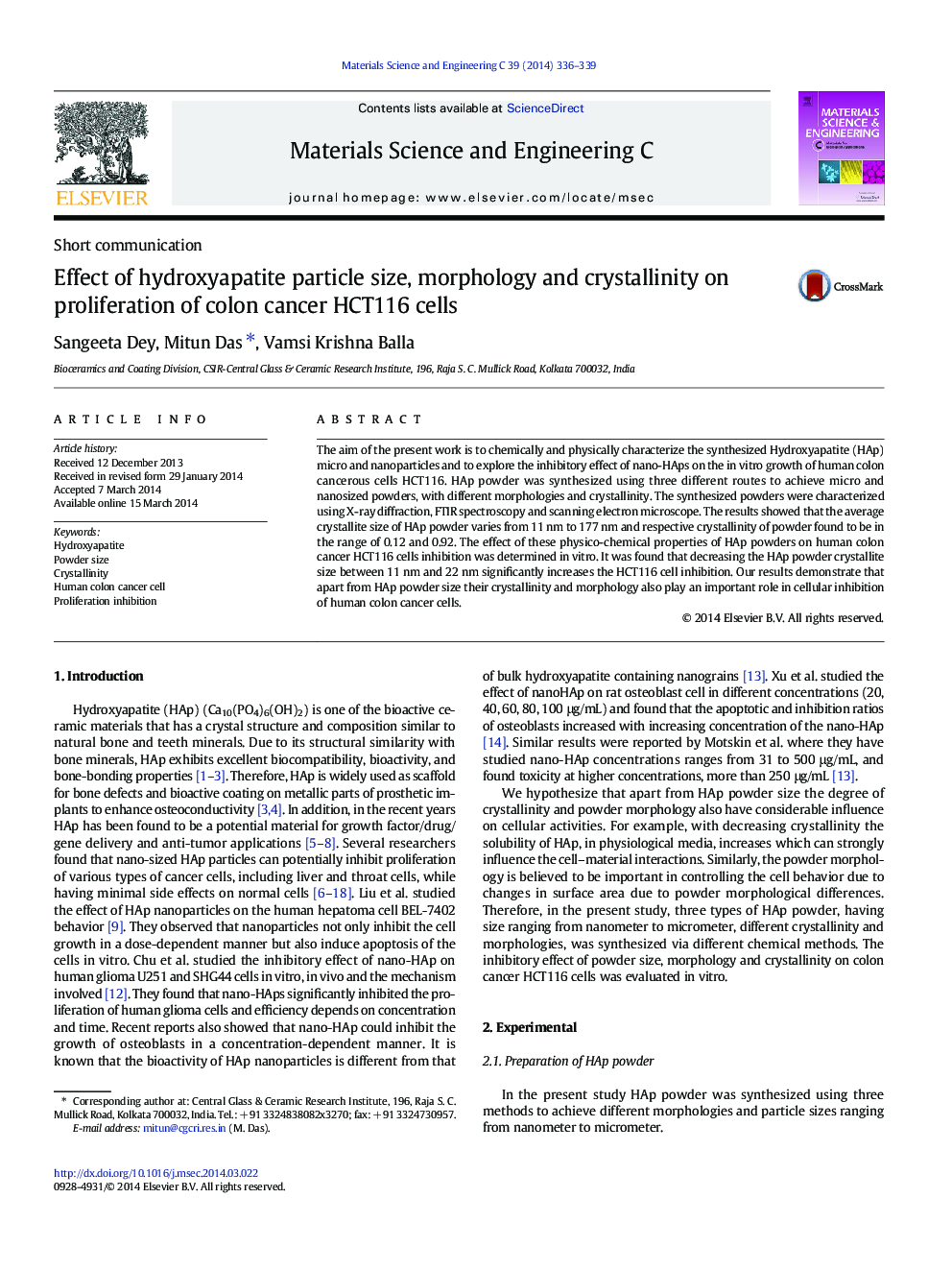| Article ID | Journal | Published Year | Pages | File Type |
|---|---|---|---|---|
| 1428805 | Materials Science and Engineering: C | 2014 | 4 Pages |
•Chemically synthesized hydroxyapatite micro and nano-particles with different morphologies and crystallinity.•In vitro cell–material interaction showed that hydroxyapatite nano-particles inhibit colon cancer cells.•Human colon cancer cell inhibition also depends on crystallinity and morphology of HAp powder.
The aim of the present work is to chemically and physically characterize the synthesized Hydroxyapatite (HAp) micro and nanoparticles and to explore the inhibitory effect of nano-HAps on the in vitro growth of human colon cancerous cells HCT116. HAp powder was synthesized using three different routes to achieve micro and nanosized powders, with different morphologies and crystallinity. The synthesized powders were characterized using X-ray diffraction, FTIR spectroscopy and scanning electron microscope. The results showed that the average crystallite size of HAp powder varies from 11 nm to 177 nm and respective crystallinity of powder found to be in the range of 0.12 and 0.92. The effect of these physico-chemical properties of HAp powders on human colon cancer HCT116 cells inhibition was determined in vitro. It was found that decreasing the HAp powder crystallite size between 11 nm and 22 nm significantly increases the HCT116 cell inhibition. Our results demonstrate that apart from HAp powder size their crystallinity and morphology also play an important role in cellular inhibition of human colon cancer cells.
